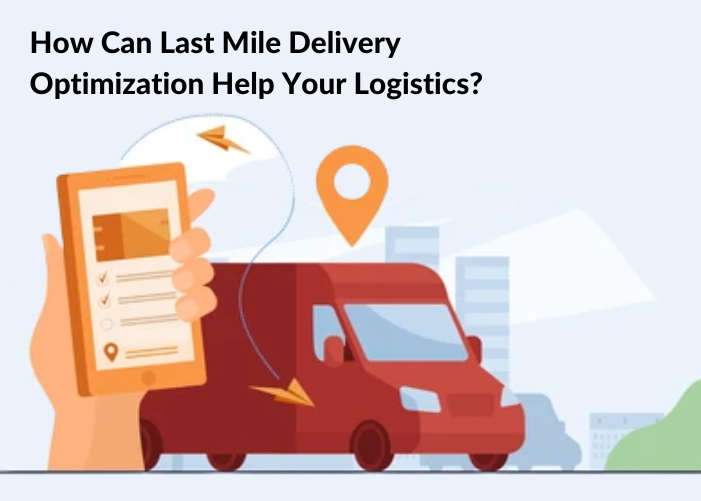Summary
Global markets, increasing competition, and changing customer demands have put immense pressure on logistics and supply chain businesses, especially on their last mile delivery management operations.
Therefore, adopting best practices to optimize their last mile delivery would go a long way to boost their businesses, meet customer demands, and achieve profitability.
I. How do companies optimize last-mile delivery?
While there are numerous ways to optimize last-mile delivery operations, companies choose those that suit them. However, there are certain core best practices that can be implemented by all such companies that provide logistics and delivery services.
All such guidelines and benchmarks are essentially aimed at setting a robust template to streamline, establish, measure, improvise, and manage company performance across last-mile delivery operations.
Let’s look at the top 6 methods to do so:
1. Establish a comprehensive plan: The first step is to create a comprehensive blueprint. One that takes into account the numerous stakeholders across the supply chain that have to work together in tandem to deliver parcels successfully, at competitive rates, and shortest possible delivery windows, to the customers.
Since various stakeholders – e.g. raw material supply, factory workers, warehouse, inventory, fleet vehicles, drivers, delivery, and logistics – all need to be aligned to the common objectives, it becomes imperative to put such a master plan in place. One stakeholder being at odds with another would create bottlenecks, and inefficiencies, and drive up costs.
Importantly, the bedrock for such operating plans must always remain flexible i.e. they must keep their ear to the ground for changes, and constantly look to improve their processes. That keeps company operations efficient.
2. Adopt modern technologies: The single biggest improvement in modern last-mile delivery systems is the automation of it all. Not only has it resulted in “bringing online” all aspects of the modern complex supply chains, but it has also improved their efficiency manifold.
The software offers vastly advanced functionality – including real-time information, 100% visibility, and live tracking—that integrates seamlessly across all its functional areas to help Logistics Managers run an efficient operation.
Last-Mile Delivery is the last leg of the supply chain and logistics network that goods travel before reaching their end destination, i.e. the customer’s doorstep.
3. Robust data-analytics: By extension of the point above, the automated systems of today have vast data-analytics capabilities.
Also, due to the automation of the entire supply chain and logistics network, there are massive amounts of data that are now generated and captured. Logistics managers can slice and dice this data in countless ways to derive meaningful insight and use this for better decision-making.
4. Establish standard operating procedures: As mentioned earlier, it is imperative to design, analyze, implement, measure, and control the operational processes of your company. Without doing so, it is impossible to optimize.
Also, once established and implemented, it doesn’t mean that such procedures are set in stone. On the contrary, the best procedures that achieve high levels of performance are those that are constantly evolving with time – with regards to technology, best practices, innovation, competitors, and changing consumer preferences. Only then can logistics firms achieve high standards in their operations that not only enhance performance but also achieve profitability.
5. Monitor operations in real-time: A great feature of modern last-mile systems is their ability to monitor operations in real-time. Logistics Managers can track all activity from start to finish from their centralized control rooms. This helps in adhering to established procedures, checking deviation (and, malpractices), helping delivery teams to counter problems and emergencies that come up, and maintaining control.
Monitoring drivers: Logistics and supply-chain companies often fail to pay the requisite amount of attention required to monitor their drivers. Common estimates reveal that drivers waste 40–60% of duty time while away on the road. Naturally, this forms a significant deviation.
Tracking drivers in real-time ensures they stay on schedule. It also ensures monitoring of all other supporting activities like vehicle tasks, loading and unloading time (etc.) which form a support system for drivers in helping them achieve their delivery goals
6. Stay customer-focused: Well, as always, the most important objective of all businesses is to keep their customers happy! Without achieving customer satisfaction, no business could ever hope to survive.
However, it is interesting to note that customers themselves are often the reason for inefficiencies in delivery operations. Constant changes in delivery windows rejected payments, and rejecting parcels on whims (etc.) can often be detrimental to their own purpose. Therefore, logistics firms would do well to monitor their customers and work with them to help improve delivery performance.
II. Optimization hacks for last-mile delivery
Since it is the final stage of the supply chain that ends with delivery at the customer’s doorstep, it becomes necessary that logistics and distribution companies meet customer demands as best as possible. In addition to the overarching best practices mentioned above, let’s look at some additional tools:
1. Tracking inventory: Legacy supply-chain methods were unable to track inventory movement after the loaded trucks had left for delivery. This caused numerous problems including spoilage, pilferage, and malpractice. However, modern technology allows products to be labeled and scanned through which they can be tracked till they are successfully delivered to the customer.
Additionally, ambient temperature within the fleet vehicles, and driver behavior (e.g. hard cornering, speeding, etc.) can also be tracked by the hardware units of the last-mile system that are fitted on the fleet vehicles. Extending visibility through the last mile is a great tool for optimizing last-mile delivery.
2. Automated route-optimization: Building on the benefits of automation as mentioned above, route-optimization, as done by these systems, is perhaps its single largest benefit. Using the ample data available, Logistics Managers arrive at the most efficient routes by balancing out several variables like destination locality, type of cargo, fleet vehicles available, road conditions, weather patterns, freelance or company drivers, weekday/weekend delivery, number of stops on a particular route (etc.). This goes a long way in optimizing last-mile delivery.
3. ePOD (electronic proof-of-delivery): Legacy methods of collecting signatures from customers, warehouse officers, logistics team members, and other workers along the logistics network posed numerous problems, including lost paperwork, soiled receipts, malpractices, and pressure on warehouse space. Using ePOD circumvents all such issues and maintains a digital track of all important documents. It improves security and can be accessed by teams as required.
4. Managing 3rd party drivers: As mentioned above, monitoring driver performance is another important facet of achieving optimal last-mile performance.
Quite naturally, logistics companies employ different grades of drivers based on their requirements, including 3rd party drivers. Their requirements have increased exponentially in recent times due to the burgeoning e-commerce trade. Therefore, using a clear and transparent last-mile delivery system that integrates all drivers with their various roles and responsibilities, schedules, performance criteria, and remuneration calculations is critical to success.
Conclusion: As is evident, logistics and supply chain companies must optimize their last-mile operations by using automated tools like last mile delivery software if they are to boost their business.
Read more information on how to deliver your product with ease & reduce delay with the best last mile delivery software




